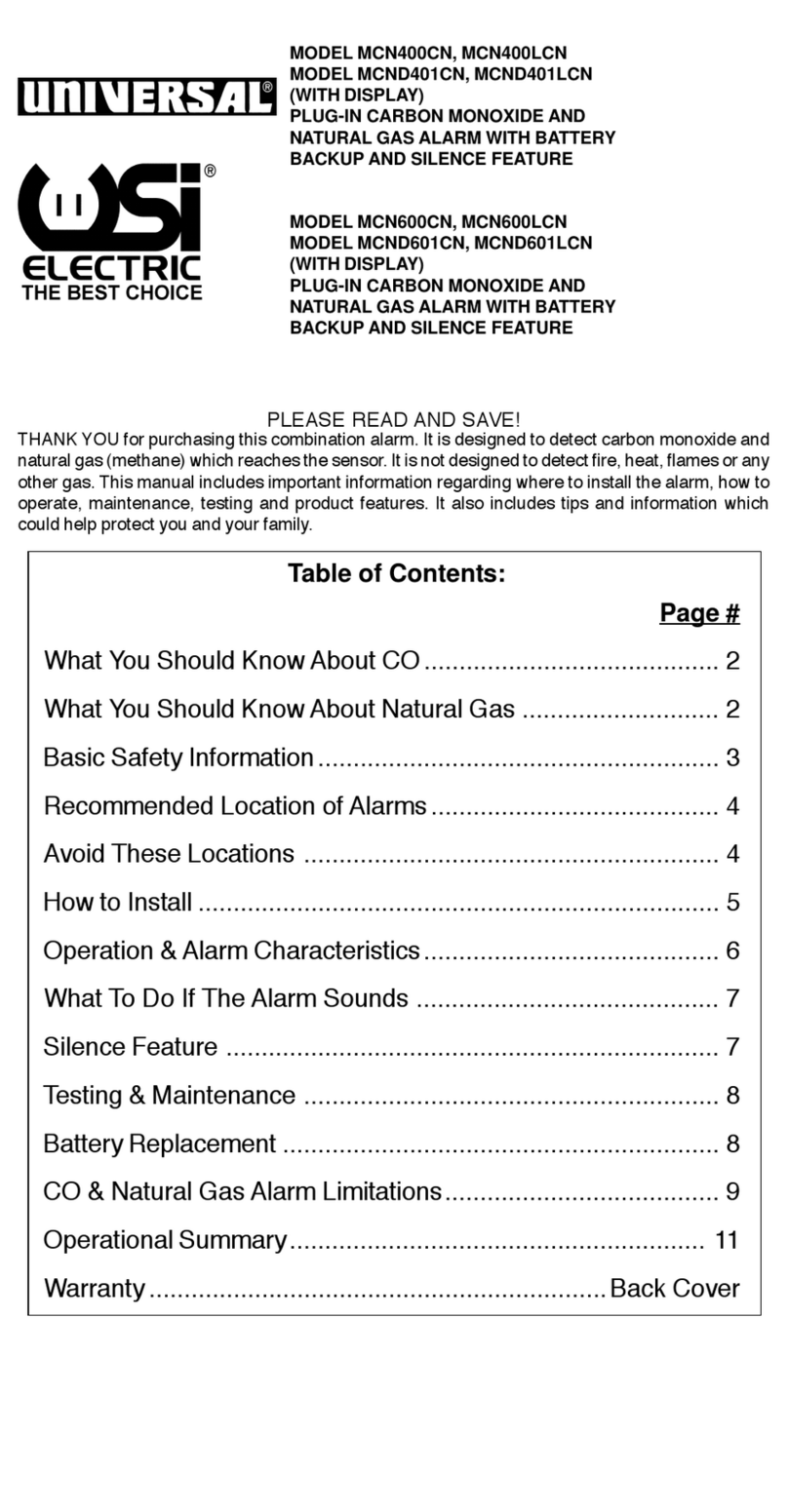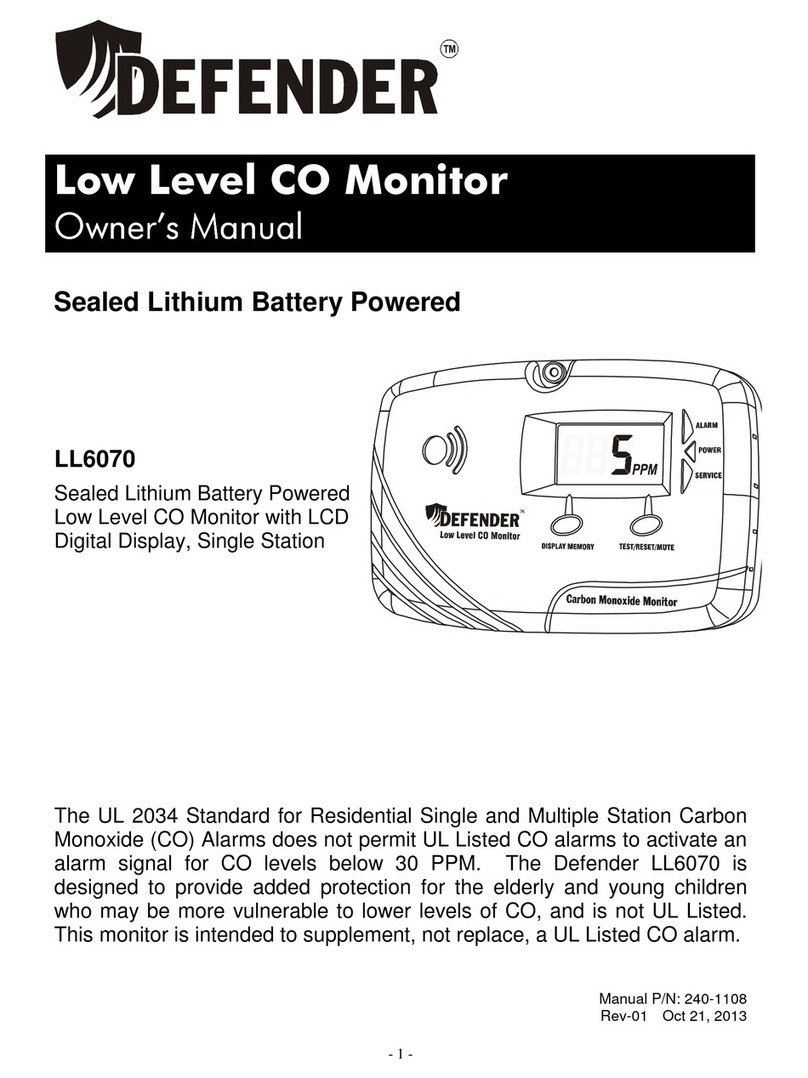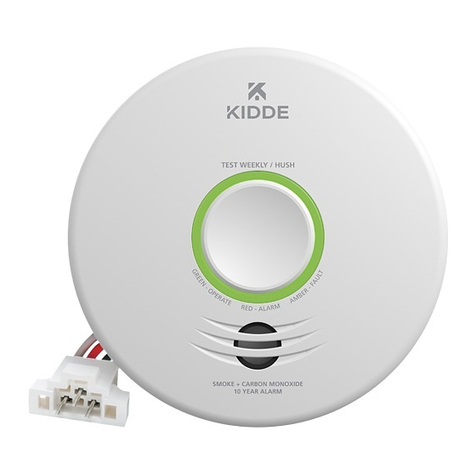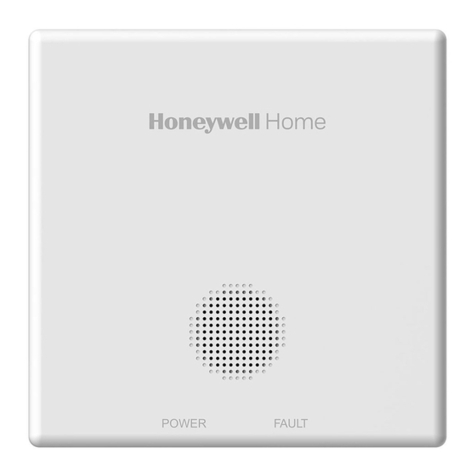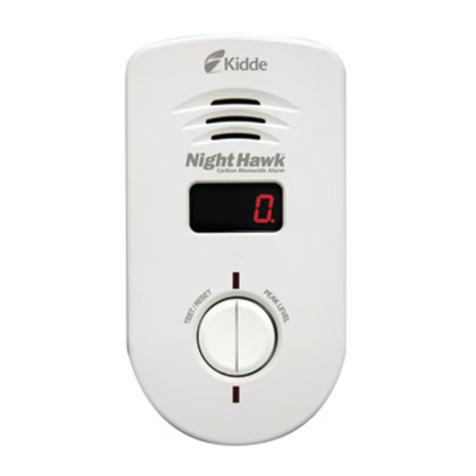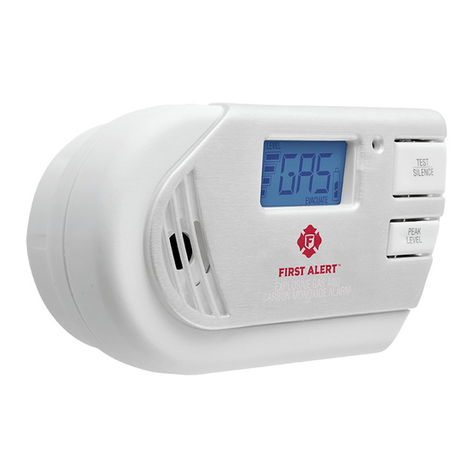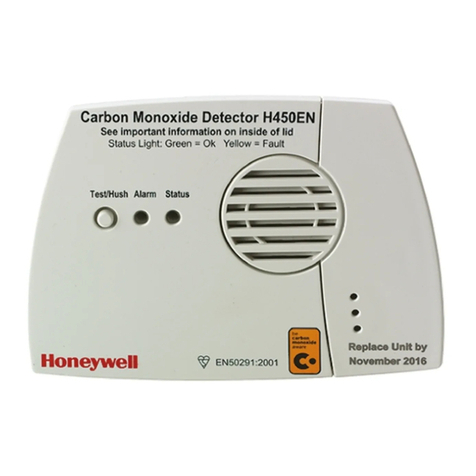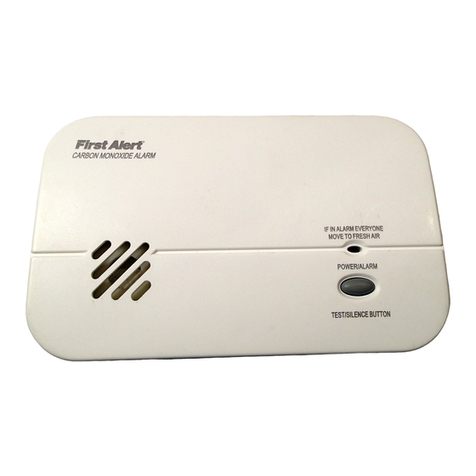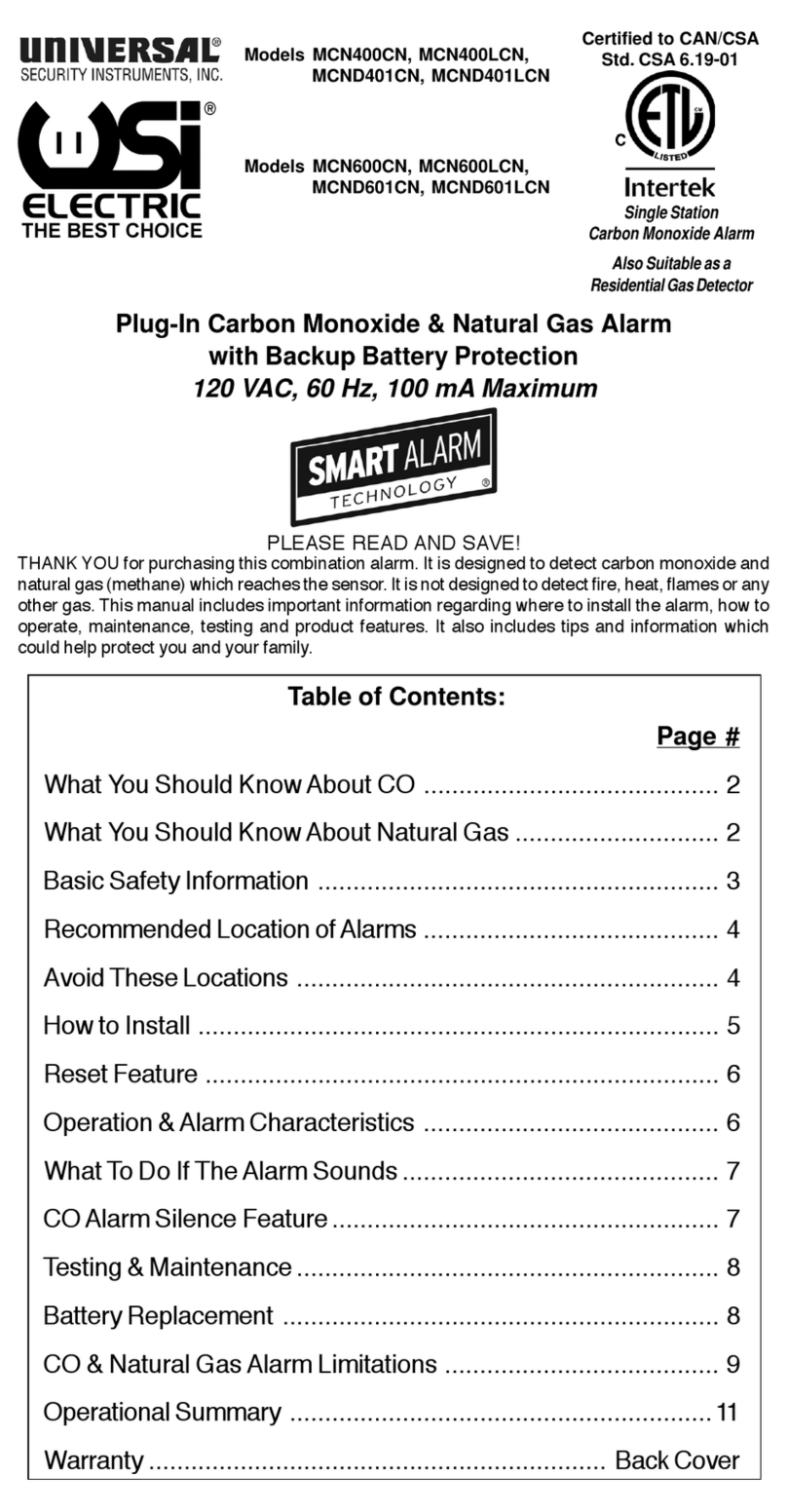Spamel SC/1B User manual

TECHNICAL SUPPORT - tel. +48 71 31 59 068
Manuall
Carbon monoxide alarm SC\1B

TECHNICAL SUPPORT - tel. +48 71 31 59 068
The producer is not responsible for damage resulting from in-
correct installation or operation of the device.
Thank you for purchasing our products. Please read the instruction
manual and maintenance guide before use.
Технически данни
Types of detected gases CO (carbon monoxide)
Supply voltage 3V DV (2 x AAA battery 1,5V)
Power consumption in alarm state ≤100 µA
Power consumption in standby
state
≤8 µA
Allowable relative humidity 15% - 90% RH
Detector type electrochemical
Alarm format a series of 4 short signals at 0.5
sec. interval, and LED signalling
Alarm volume ≥ 85dB / 1m
Tested alarm concentration 300 ppm, alarm below 3 minutes
Range of working temperatures -10°C ÷ +40°C
Carbon monoxide alarm SC\1B constantly monitors the presence of car-
bon monoxide (CO) in the air. When the maximum safe concentration
of this gas is exceeded, the device triggers optical and audible alarms.

TECHNICAL SUPPORT - tel. +48 71 31 59 068
IN CASE OF ALARM
Turn off the gas supply, shut off the stove. Open the doors and windows.
Before you leave, check if anyone has left in the room. Then leave the
room and do not return. Call the rescue service for help (gas service, fire
brigade, etc.).
INSTALLATION
SC\1B sensor is intended for use in the rooms where the potential risk
resulting from the dangerous concentration of carbon monoxide is the
highest. The device is ideal for kitchens, bathrooms, boiler rooms, ga-
rages etc. When installing the sensor make sure it will be heard from
other rooms in the building as well. Carbon monoxide mixed with car-
bon dioxide is thicker than the air so it is recommended to install the
sensor in the lower part of a wall. The recommended installation height
for bedrooms is 0.5m above the floor. The optimal installation height for
other rooms is 1.5m above the floor.
1. Separate the mounting base from the body of the device by turning
it anti-clockwise.
2. Insert two AAA 1.5V batteries into the device.
3. Test the device by pressing the button on the cover for a few se-
conds. If the device works properly, interrupted signals should be he-
ard from the speaker.
4. Mark 2 spots for mounting bolts in the desired location, using the 2
holes in the mounting base. Then, drill 2 holes of the proper diameter
in the wall and insert the mounting bolts (included). Mount the base
on the wall using the screws. Attach the body of the device to the
base using 2 hooks in the body, matching the two oblong holes of
the corresponding size, located in the base. When the elements are
fitted turn the body to the right.
5. Press the TEST button at the side of the cover. The device will run the
test procedure, testing the audible signalization of the alarm. If the
signal is "beep" 0.5 s - pause - 0.5 s etc., and the red LED is not blinking
or is constantly lit, this means that the device is damaged. Contact
the technical support of the importer.

TECHNICAL SUPPORT - tel. +48 71 31 59 068
USE
1. At least once per month run the device test using "Test / Hush"
button.
2. Remove the dust from the device cover.
3. When the battery is almost empty it will be indicated with a single
audible sound and the red "Alarm" LED which will blink at approx. 40
sec. interval. The battery should be immediately replaced.
4. The self-diagnostic system allows to check for a potential malfunc-
tioning of the device. In that case the device will trigger an audible
alarm (one signal every 30 sec.) and an optical alarm - indicated by a
flashing "Fault" LED.
PRECAUTIONS AND MAINTENANCE
Remember that because of technical restrictions (e.g. device malfunc-
tion, low battery) and the installation location, carbon monoxide sen-
sors do not guarantee in 100% the detection of carbon monoxide but
increase the probability of early detection of the dangerous concentra-
tion. It is important to test the device as specified in the manual and to
check periodically the chimney and ventilation ducts which can be the
source of carbon monoxide. The average service time of the installed
sensor is approx. 5 years from the first use of the device. After that time
the sensitivity of the sensor can decrease dramatically.
1. Make sure the air vents in the cover are not blocked with dust or
other substances.
2. Remove the dust from the device cover. Do not install the detector in
the locations where the humidity or dustiness are high or where the
temperature exceeds the range of working temperatures.
3. Do not paint the device. Before painting the walls of the room where
the alarm is installed, it must be removed and reinstalled when the
paint is dry.
4. Do not install the detector near windows, fans, heat sources, or in
locations where the leaking gas may disappear quickly.
5. Test the device once per month.
6. Do not repair the device on your own

TECHNICAL SUPPORT - tel. +48 71 31 59 068
PRACTICAL INFORMATION
Carbon monoxide is a very difficult gas for detection by a human be-
cause it is colourless and odourless. It is poorly water-soluble, and its
density is lower than the air. Together with carbon dioxide, it is a product
of burning the fuels, which makes the combined density of the combu-
stion gases higher than the air, so they accumulate in the lower parts
of the rooms. There is no exact value above which the concentration of
carbon monoxide is dangerous. It depends on the time of inhaling the
gas. Inhaling the carbon monoxide at 200 ppm for 2-3 hours will cause a
light headache, nausea and dizziness. The concentration of 12800 ppm
will cause death in 1-3 minutes.
*ppm - number of carbon monoxide molecules in 1 million molecules
of the air
Table of contents
Popular Carbon Monoxide Alarm manuals by other brands
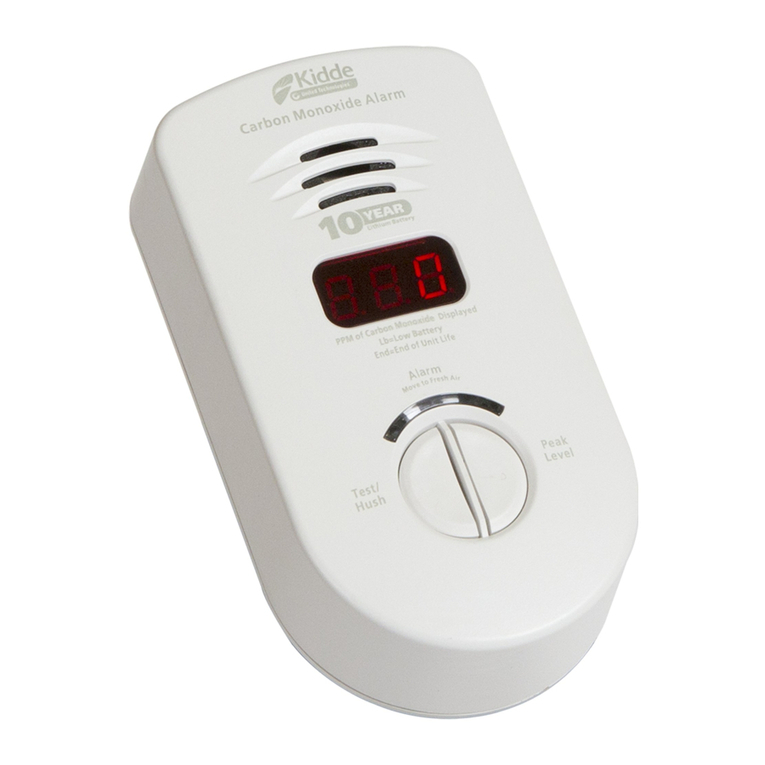
Kidde
Kidde KN-COP-DP-10YL user manual
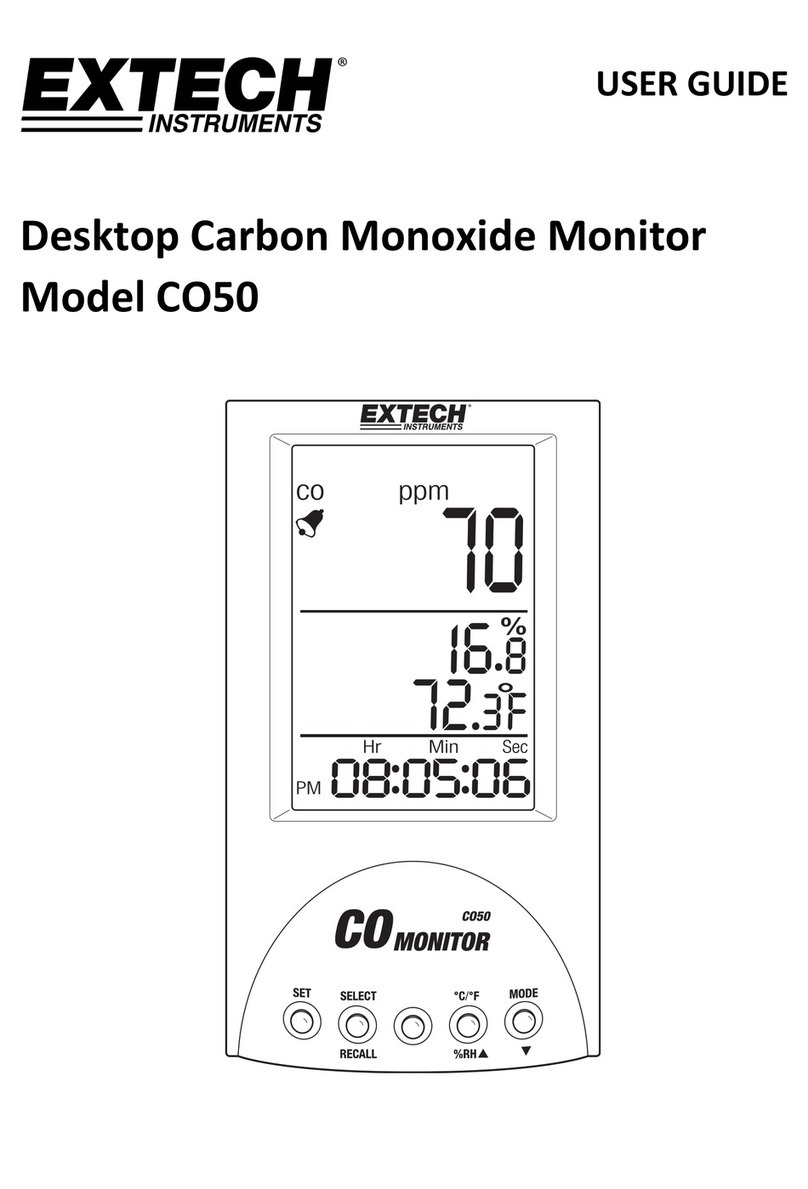
Extech Instruments
Extech Instruments CO50 user guide
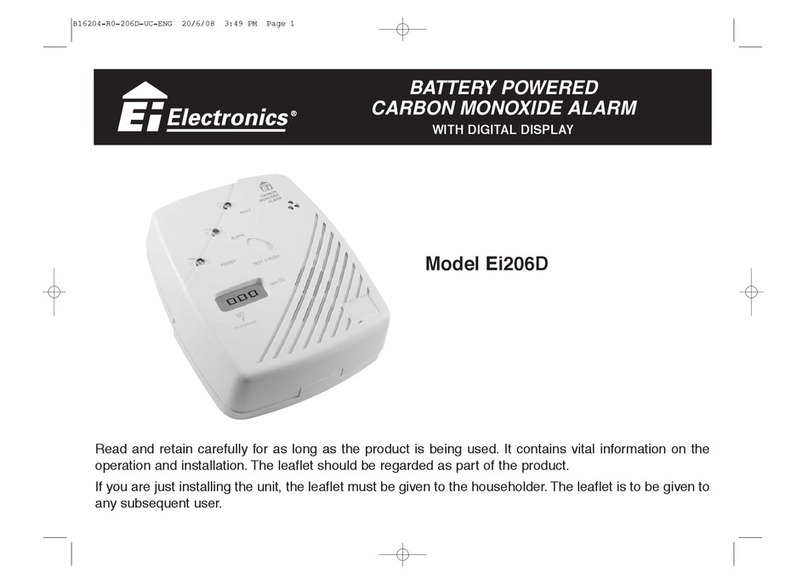
Ei Electronics
Ei Electronics Carbon Monoxide Alarm Ei206D user manual
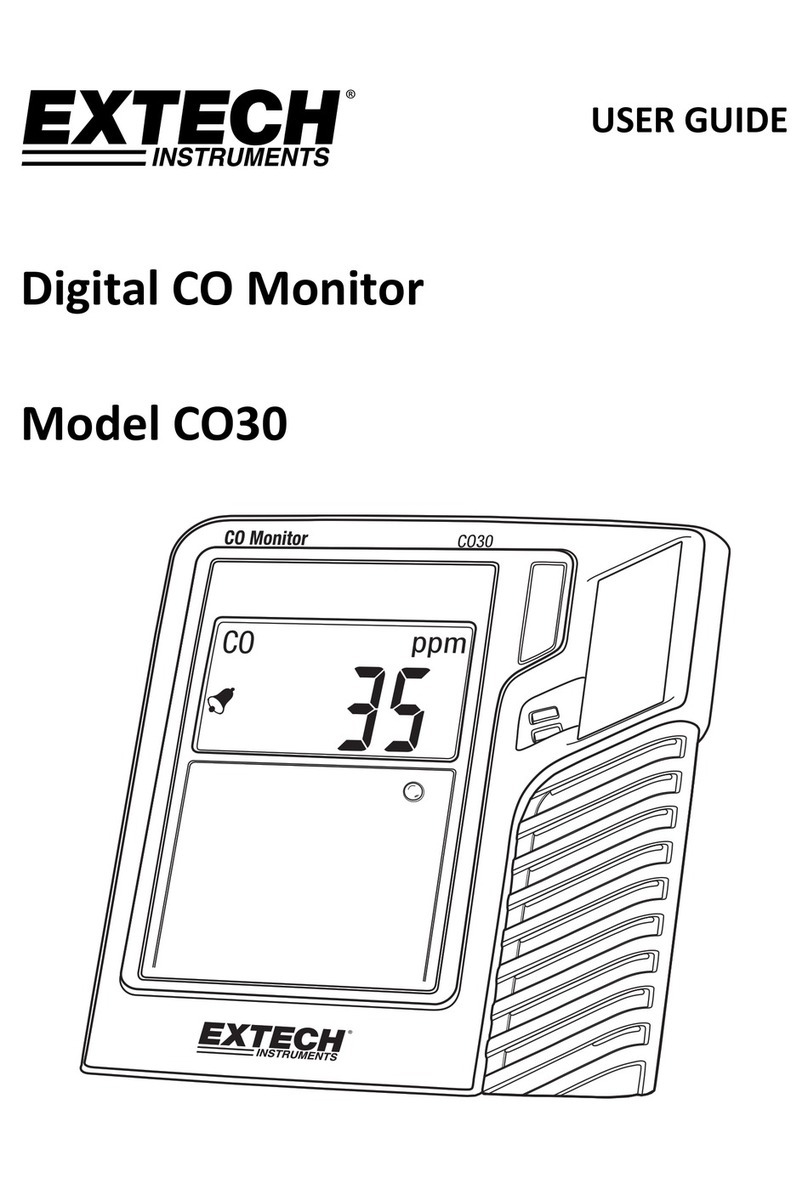
Extech Instruments
Extech Instruments CO30 user guide
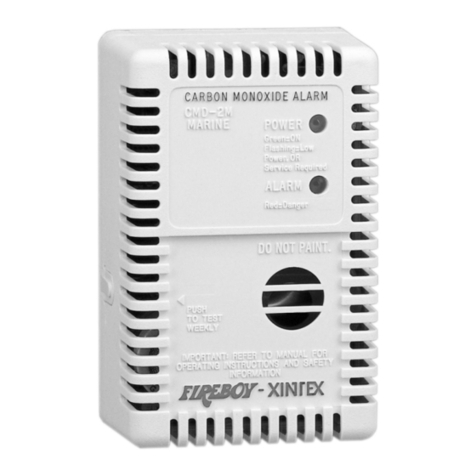
Xintex
Xintex CMD-3M Marine Installation and operation manual
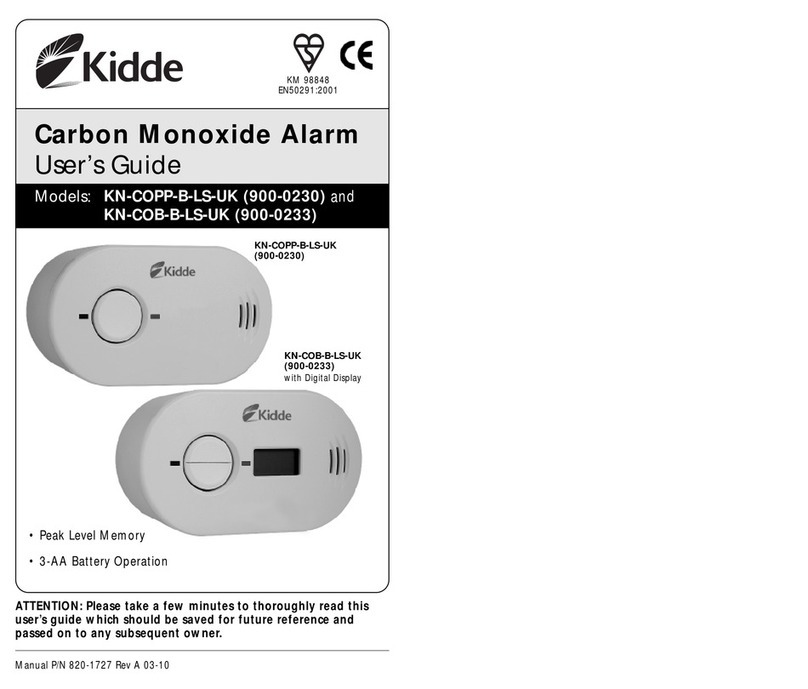
Kidde
Kidde KN-COPP-B-LS-UK user guide
